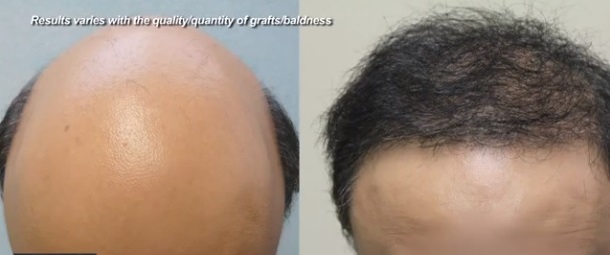
Hair Restoration graft calculation
Knowing the total amount of grafts needed will aid in the decision of which hair restoration technique you require, founded on the limitations of certain tools and technology. In other words, a person with extreme hair loss will need several thousand hair grafts. This high-level need exceeds the capability of strip harvesting. A high number of grafts also shrinks the pool of surgeons on this principle; only an advanced FUE doctor will have the aptitude to perform such a large-scale surgery. Similarly, the quantity of hair grafts affects the cost—more donor hairs transplanted equals a more expensive surgery.
How to Calculate Your Grafts for Hair Restoration
In your initial hair restoration graft calculation and estimations you must determine the number of grafts in order to get perspective on all other aspects of hair restoration surgery. One can normally reason a rough number by allotting each level on the Norwood scale 1,000 grafts. But this will only be an estimation. Calculating a more exact number takes the following distinctive factors into account:
- Your goals
- Your hair color and texture
- The diameter of your hair shafts
- The size and shape of your scalp
The most precise way to find out the number of hair grafts you’ll need is to schdule a consultation with a hair restoration practitioner. However, if you feel like a consultation is something you’d rather do a little later, you can calculate on your own.
This approach, discussed in several hair transplant textbooks, uses the expectation that a level NW 7 on the hair loss scale has about 200 square centimeters of bald area to be filled. Using the prior mentioned approximation of 1,000 more grafts for each Norwood level, this equals 35 grafts to fill each square cm (7,000/200=35). Follow these next steps to arrive at your textbook hair graft calculation:
- Step one: Obtain a transparent paper/sheet with the line markings of square centimeter graph paper.
- Step two: Place the transparent paper over the bald area of your head and trace out its hair-bearing edges with a wax pencil or marker. (A friend or family member would be useful in doing this).
- Step three: Count how many squares fall within the tracing. Multiply this quantity by 35.
Bear in mind that not all heads are created equal. Some are bigger and rounder, some smaller and more oval-shaped. While most NW 6 or 7 men will count the typical 200 squares, others might count up to 300, and yet others might count as few as 170. Even after assessing your hair restoration graft count with this method, it remains best consult a hair restoration surgeon to have it confirmed.
Importance of Hair Graft Count for Severe Cases
With the advent of advanced FUE procedures (like the uGraft), which enable the use of non-head donor sources, experienced surgeons can credibly treat NW6+ cases. Previously, NW6 and NW7 were considered poor candidates due to lack of donor supply, and thus, they were little considered in this discussion. Now that these patients qualify for hair restoration, the graft question has become even more important. In the use of non-head hair, finding an accurate graft estimate must take into account the following factors in addition to those listed above:
- Hair length potential. (Shorter hairs provide less coverage, thus more of them are needed)
- Curliness (Curly hair provides more coverage)
- Hair cycle (Some body hair has a prolonged resting phase that can delay growth for several months, as opposed to head hair, which has a standard resting phase of only 4 weeks. Body hair that rests for prolonged periods of time would require a higher graft count)
A high-level FUE surgeon will be able to provide the most accurate hair graft estimate for cases that must make use of body hair.
If you are interested in seeing an actual patient example, click here to read more about a patient who underwent a procedure involving 14,000 grafts

